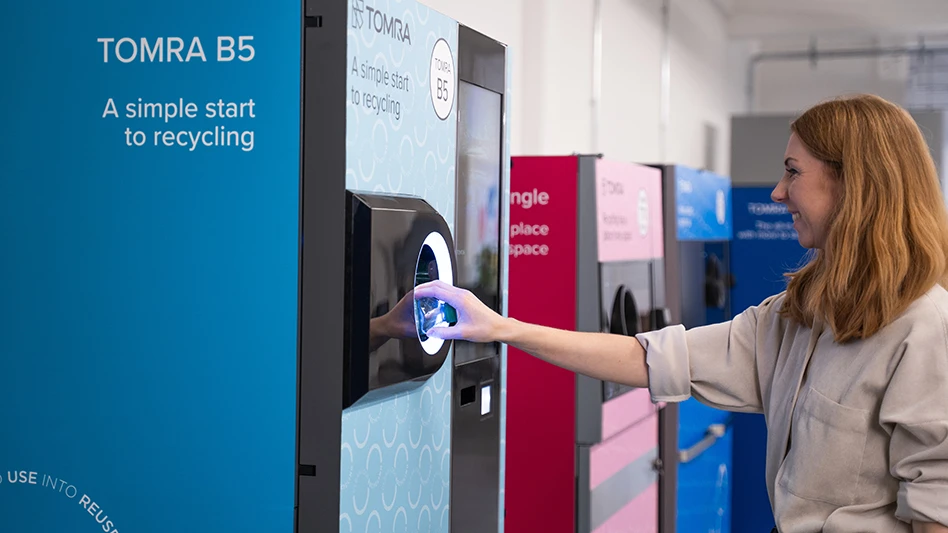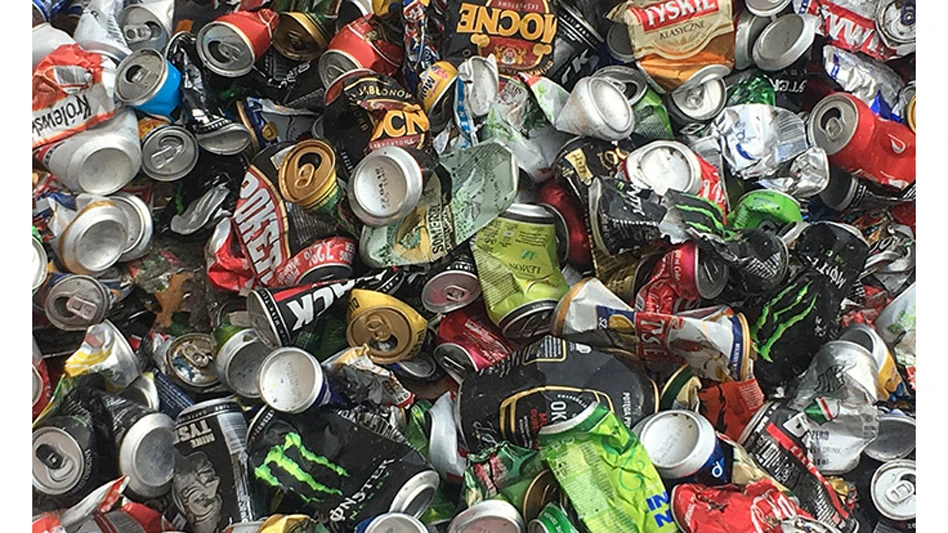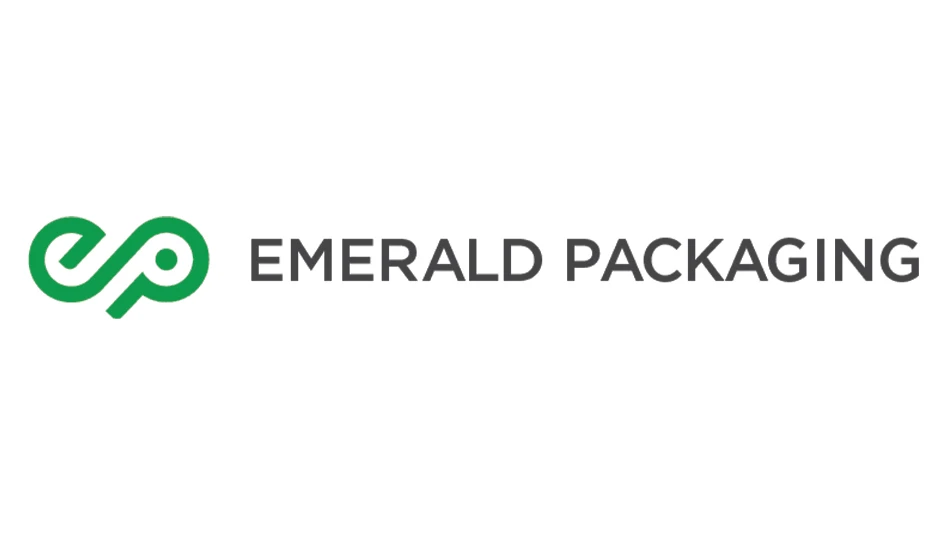
The American Chemistry Council (ACC), Washington, D.C., has released its annual plastic film recycling report, which shows the recycling of postconsumer plastic film packaging in 2013 increased by 116 million pounds from the prior year. The report notes that a total of 1.14 billion pounds of postconsumer plastic film packaging were recycled in 2013.
The 2013 National Postconsumer Plastic Bag & Film Recycling Report shows that the figure for 2013 is the highest annual collection of plastic film—a category that includes product wraps, bags and commercial stretch film made primarily from polyethylene (PE) —for recycling, since the survey began in 2005.
The ACC report also finds that PE film collected for recycling has increased by 74 percent since 2005.The consulting firm Moore Recycling Associates Inc., Sonoma, California, which authored the report for the ACC’s Plastics Division, attributes the gain to a combination of increased collection and more comprehensive reporting.
The increases detailed in the National Postconsumer Plastic Bag & Film Recycling Report show that greater collection is taking place among small and midsized businesses and that consumers are bringing more used flexible plastic wraps to at-store collection programs to be recycled.
 “We are pleased to see such strong growth in the recycling of polyethylene wraps,” says Steve Russell, ACC vice president of plastics. “These increases highlight the critical role that grocers, retailers and other businesses play in collecting this valuable material.”
“We are pleased to see such strong growth in the recycling of polyethylene wraps,” says Steve Russell, ACC vice president of plastics. “These increases highlight the critical role that grocers, retailers and other businesses play in collecting this valuable material.”
To strengthen the efforts to increase film recycling, in recent months, several major brands and retailers have started placing the Sustainable Packaging Coalition’s (SPC’s) store drop-off label on their film packages to remind consumers to bring their used PE wraps to participating grocery and retail stores to be recycled.
In addition, the SPC, along with the Flexible Film Recycling Group and the Association of Postconsumer Plastic Recyclers have launched the Wrap Action Recycling Program (WRAP), which is focused on making it easier for state and municipal governments, brands and retailers to increase awareness of opportunities to recycle used PE wrap at local retailers.
A separate ACC report recently released finds that slightly more than 1 billion pounds of rigid plastics, excluding bottles (measured separately), were collected to be recycled in the United States in 2013. The 2013 National Postconsumer Non-Bottle Rigid Plastic Recycling Report shows that the volume represents triple the amount collected since 2007, though the 2013 figures show a modest 1 percent decline from the prior year’s figures.
The ACC report also found a 17 percent annual increase in domestic processing of postconsumer items, with 67 percent processed in the U.S. and Canada—the highest rate since the ACC introduced the annual report in 2007.
Of the resin categories measured in the survey, high-density polyethylene (HDPE) and polypropylene (PP) showed modest increases in 2013, with HDPE making up 36 percent, and PP making up 39 percent of the total 1 billion pounds collected.
The primary domestic uses for these postconsumer materials include automotive parts, crates, buckets, pipe and lawn and garden products.
An important driver of domestic processing is the growth of plastic recovery facilities, which purchase mixed rigid bales (typically less valuable) and separate them into segregated resins.

According to Moore Recycling Associates, which also published this report, the decrease in rigid plastics recycling in 2013 is the only dip in the report’s history and is largely attributable to China’s Green Fence standards, which began in 2013.
The Green Fence had a twofold impact on markets for recycled plastics, according to Moore Recycling Associates: China’s tighter controls resulted in more material available for U.S. plastic processors, and U.S. recyclers have had to meet higher quality standards to sell this material domestically and abroad.
“Recyclers addressed the challenges and opportunities presented by the Green Fence, and we believe that the plastic recycling industry emerged stronger as a result,” says Patty Moore, president of Moore Recycling. “Recycled plastic producers have invested in advanced separation infrastructure or taken other steps to create higher quality bales with greater yields.”
The 2013 National Postconsumer Plastic Bag & Film Recycling Report shows that the figure for 2013 is the highest annual collection of plastic film—a category that includes product wraps, bags and commercial stretch film made primarily from polyethylene (PE) —for recycling, since the survey began in 2005.
The ACC report also finds that PE film collected for recycling has increased by 74 percent since 2005.The consulting firm Moore Recycling Associates Inc., Sonoma, California, which authored the report for the ACC’s Plastics Division, attributes the gain to a combination of increased collection and more comprehensive reporting.
The increases detailed in the National Postconsumer Plastic Bag & Film Recycling Report show that greater collection is taking place among small and midsized businesses and that consumers are bringing more used flexible plastic wraps to at-store collection programs to be recycled.
 “We are pleased to see such strong growth in the recycling of polyethylene wraps,” says Steve Russell, ACC vice president of plastics. “These increases highlight the critical role that grocers, retailers and other businesses play in collecting this valuable material.”
“We are pleased to see such strong growth in the recycling of polyethylene wraps,” says Steve Russell, ACC vice president of plastics. “These increases highlight the critical role that grocers, retailers and other businesses play in collecting this valuable material.”To strengthen the efforts to increase film recycling, in recent months, several major brands and retailers have started placing the Sustainable Packaging Coalition’s (SPC’s) store drop-off label on their film packages to remind consumers to bring their used PE wraps to participating grocery and retail stores to be recycled.
In addition, the SPC, along with the Flexible Film Recycling Group and the Association of Postconsumer Plastic Recyclers have launched the Wrap Action Recycling Program (WRAP), which is focused on making it easier for state and municipal governments, brands and retailers to increase awareness of opportunities to recycle used PE wrap at local retailers.
A separate ACC report recently released finds that slightly more than 1 billion pounds of rigid plastics, excluding bottles (measured separately), were collected to be recycled in the United States in 2013. The 2013 National Postconsumer Non-Bottle Rigid Plastic Recycling Report shows that the volume represents triple the amount collected since 2007, though the 2013 figures show a modest 1 percent decline from the prior year’s figures.
The ACC report also found a 17 percent annual increase in domestic processing of postconsumer items, with 67 percent processed in the U.S. and Canada—the highest rate since the ACC introduced the annual report in 2007.
Of the resin categories measured in the survey, high-density polyethylene (HDPE) and polypropylene (PP) showed modest increases in 2013, with HDPE making up 36 percent, and PP making up 39 percent of the total 1 billion pounds collected.
The primary domestic uses for these postconsumer materials include automotive parts, crates, buckets, pipe and lawn and garden products.
An important driver of domestic processing is the growth of plastic recovery facilities, which purchase mixed rigid bales (typically less valuable) and separate them into segregated resins.

According to Moore Recycling Associates, which also published this report, the decrease in rigid plastics recycling in 2013 is the only dip in the report’s history and is largely attributable to China’s Green Fence standards, which began in 2013.
The Green Fence had a twofold impact on markets for recycled plastics, according to Moore Recycling Associates: China’s tighter controls resulted in more material available for U.S. plastic processors, and U.S. recyclers have had to meet higher quality standards to sell this material domestically and abroad.
“Recyclers addressed the challenges and opportunities presented by the Green Fence, and we believe that the plastic recycling industry emerged stronger as a result,” says Patty Moore, president of Moore Recycling. “Recycled plastic producers have invested in advanced separation infrastructure or taken other steps to create higher quality bales with greater yields.”
Latest from Recycling Today
- ReMA urges open intra-North American scrap trade
- Axium awarded by regional organization
- China to introduce steel export quotas
- Thyssenkrupp idles capacity in Europe
- Phoenix Technologies closes Ohio rPET facility
- EPA selects 2 governments in Pennsylvania to receive recycling, waste grants
- NWRA Florida Chapter announces 2025 Legislative Champion Awards
- Goldman Sachs Research: Copper prices to decline in 2026





